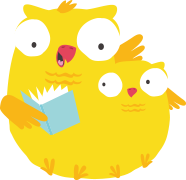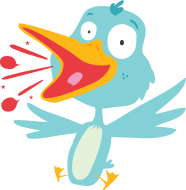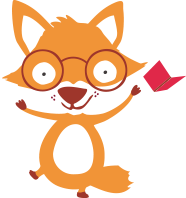Cuddling

Reading as a family gets the best results. Without your involvement, the benefits of this activity are far less signifi cant
Children have a natural tendency to sit on your lap and cuddle up close when you look at a book with them. These moments together foster an emotional connection between you and your child. When you explore a storybook with your child, she feels special, cherished and valued, because your attention is entirely focused on her and what you’re sharing through the book.
Even if your baby is still too young to fully understand the story, she experiences a feeling of well-being when being read to, because you are in a relaxed frame of mind and have stepped back a bit from daily life to spend a special moment with her.
Exploring

A book is a complete toy that can be looked at, touched, handled and therefore used to play with.
You can do simple activities with your child to explore books using all his senses! Give him a book that can go in the bath or chewed. Watch your baby manipulate the book or put it in his mouth. Your baby will love making noise with the pages, scratching at the texture with his fingers and looking at the colours and pictures.
Gradually teach him how to look at a book: how to turn the pages, hold it open and so on. Your toddler will quickly figure out how a book works and enjoy turning the pages with you, several at a time at first, then, with some practise, he’ll learn to turn them one by one.
Naming

A book is an invaluable toy that enriches your little one’s knowledge and vocabulary. It allows your baby to see her world in pictures.
Looking at books is the best way to learn new words. What’s more, books will help your child understand more complex notions such as colours, shapes and emotions. Your baby loves listening to your voice. She associates words with pictures to learn how to talk.
The images she sees in books help her understand what you’re saying. You’ll probably notice that her favourite books talk about routines (bathtime, meals) and familiar things (toys, animals, the park).
Pointing

Draw your child’s attention to the pictures by pointing at them. Th is will help him to direct his attention and learn where to look.
When reading to your child, point to the pictures. With time, he’ll start pointing to what interests him himself. Take the opportunity to put words to what he’s pointing out: “That’s a flower.” Add details too: “It’s pink and it smells good!” – and you can mime the action of smelling. Babies love showing what interests them and what they like.
Your baby communicates first by pointing to a picture and then by using words associated with that picture: “Cat eat.” You can then respond by correctly restructuring his sentence: “Yes, the cat is eating.”
Playing

There are several ways to make the most of reading with your child.
Reading is one of the most enjoyable activities you can do with your child. When you read to her regularly, you foster your child’s development. Reading helps with language acquisition, teaches your child to listen and prepares her to recognize written words.
It’s also an opportunity for you to spend time together in a relaxed, fun and emotionally satisfying way. Playing with your child and a book, even just for five minutes, is giving her a gift that will last a lifetime.
Back to the Feature